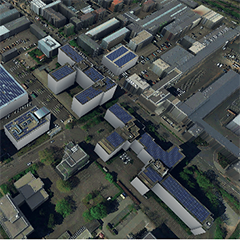In general mounting components play a minor role across the PV sector as a whole. Most of the focus is on PV modules, electricity and annual yield. Compared to the key role of these components, this is somehow astonishing. Additionally, there are daring improvements, for flat-roofs for example, where there has been far reaching development over the past five years.
As the development of new components for pitched roofs has slowed down, the amount of damaged installations has increased. This leads on directly to the root cause and certainly won’t be found in the lack of proper components.
Apart from inappropriate installation, in some cases, the lack of proper calculation of the measurements of the mounting components can be easily identified as the reason. There are a couple of reasons which explain this problem. One is historic, the German DIN, where only the calculation of fixations per m2 was required. The result did not tell the installer precisely where to position them. Another one is that most planners and installers seemed to operate well estimating the type of fixation, rail and layout, based on their experience.
Today both EUROCODE and its national annexes and US Building Code require a detailed calculation of statics, but a huge number of planners are still estimating – which is a horrendous conception, as they are responsible for repair and indemnity.
Having the residential sector in mind, having to repair just a small number of defected installations, could possibly ruin an installer. Imagine this on a commercial scale, with aerodynamic systems; each storm will be a nightmare for every installer.
As an installer or planner is not usually a structural engineer and as changes in project design need to happen quickly, reliable software and transparent visualisation, together with extensive project reports, are essential. The goal has to be to serve these demands as a kind of by-product of the regular project design process.



























